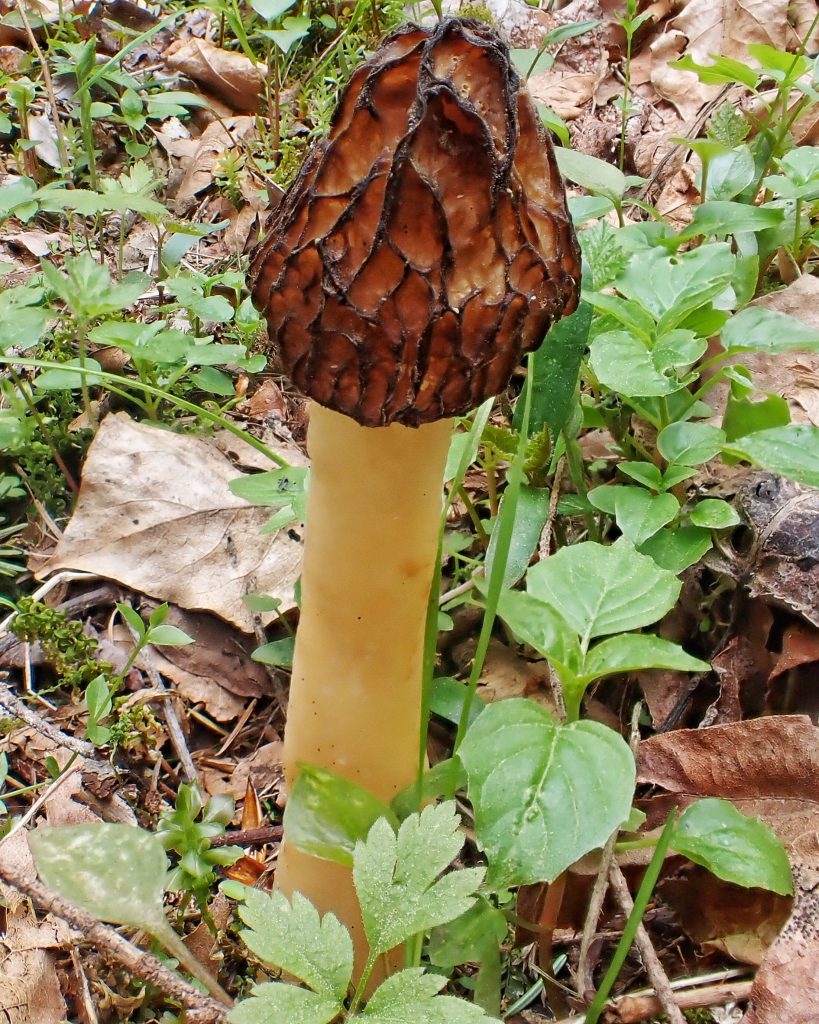
This very cool looking fungus was another great find that my observant grandson Lee made on our trip to the mixed deciduous and conifer woodlands above the confluence of the Green and NF Toutle rivers. Being fungi identification challenged, I told him that I thought it was a morel. But just a few minutes with my mushroom books convinced me it was instead Verpa bohemica, which, despite the presence of the word morel in many of its common names (which include early morel, early bell morel, wrinkled thimble morel, wrinkled thimble, wrinkled thimble-cap and false morel [although that common name is more frequently attached to fungi in the genus Gyromitra]) is not a morel (genus Morchella). Reason #76 (or is it #77?) not to use common names alone when labeling a plant or animal. They are an Ascomycota fungi, rather than a Basidiomycota fungi, the phyllum which comprises most of the well kown edible mushrooms.
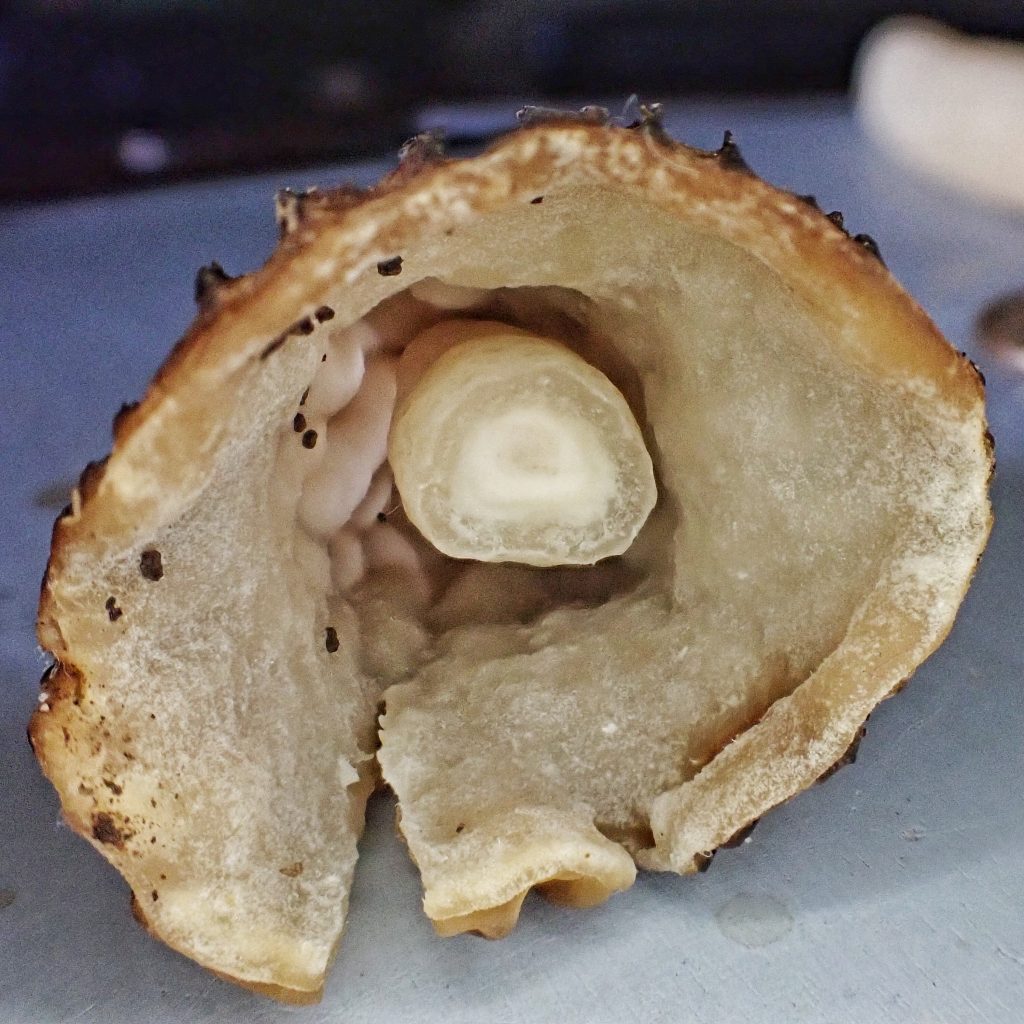
Except for experimenting with some magic mushrooms in my adventurous youth, I’ve never consumed a wild mushroom. Mostly that is because I’ve never really cared for the taste, and especially the texture, of fungi. But, I’m sorry to admit, there is also an element of fear, and I’ve never forgotten the mother of a friend of mine saying, “There are old mushroom pickers, and there are bold mushroom pickers, but there are no bold, old mushroom pickers”. However I have come to recognize that simple judiciousness, i.e. doing one’s due diligence on researching and identifying a mushroom, and especially not taking the word of folks whose expertise is questionable (yes, I’m particularly talking about ignoramouses one encounters on the internet), when coupled with not eating raw wild mushrooms, and only consuming small portions of a digestively new species, is probably sufficient to ensure one’s safety.
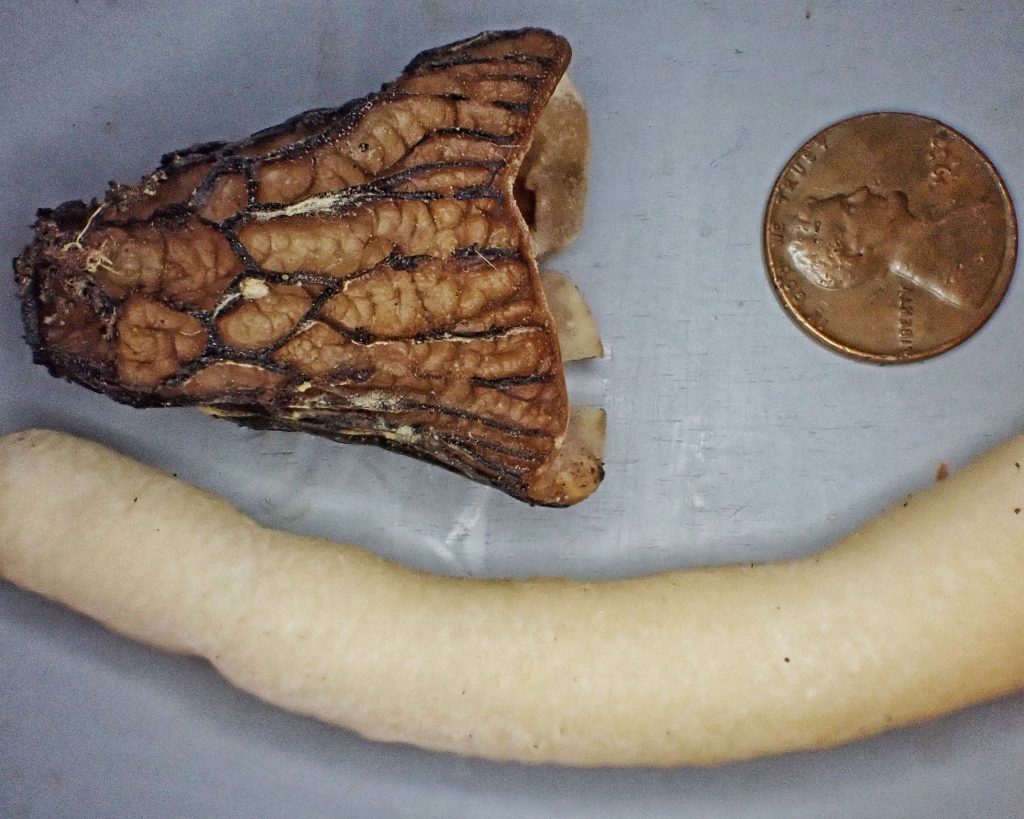
People do eat Verpa bohemica. “First, though, the cautionary stuff, and it is important with Verpas, so read and heed the following. This mushroom must be thoroughly cooked, as all wild mushrooms should be. However, in addition to cooking, Verpas must be parboiled prior to cooking. Parboil them outdoors or under a good, strong exhaust fan so that you won’t inhale the steam. It is believed that Verpas contain a Gyromitrin-like toxin, which is released by parboiling. If these precautions are taken, Verpa are safe for most people. Some, however, are sensitive to it and will experience gastrointestinal upset or even loss of muscular coordination. First timers should eat only a small amount at first, and should not eat Verpa several days in a row.” Mad about Mushrooms . . .: Verpas 101 . However- “Verpa have a somewhat confusing edibility status. This confusion stems from a variety of causes, including: mistaken identity, being lumped in with more toxic fungi, the misnomer “false morel” being applied liberally across several genera, and the unverified but published musings of mycologists snowballing through a few mycophobic decades in the USA. Recent publications by trusted mycologists, like Mushrooms of the Redwood Coast by Noah Siegel and Christian Shwarz, simply list V. conica and V. bohemica as “edible”. No caveats or warnings of any sort. These mushrooms are widely eaten and sold commercially in other parts of the world. The vast, vast majority of people who speak out against them are US citizens with a lack of knowledge about mushrooms. Verpa species are no more toxic than any “true morel”, and should be treated as such. The subject of edibility is covered in detail in THIS wonderful article by Fungi Magazine.” Early Morels: How to Find and Identify Verpa Mushrooms! – Mushroom Marauder . The article in Fungi Magazine goes into great detail on the edibility of these mushrooms, but their stance can be summed up in the abstract; “The spring ascomycete Verpa bohemica − the “early morel” − has a long tradition of consumption in Emilia-Romagna (Northern Italy), where it is regularly collected, safely eaten and officially traded, as well as true morels (Morchella spp.). Unfortunately, V. bohemica is still listed among suspect or toxic mushrooms in most of North American and extra-European texts, despite the lack of analytical confirmation for the occurrence of toxins such as gyromitrin and coprine, which V. bohemica has been allegedly blamed for in the past, and in the absence of sound toxicological evidence as well. In fact, poisonings occasionally reported in the old literature after consumption of V. bohemica might have well been misunderstood with the so-called neurological syndrome associated with ingestion of Morchella spp. which has been formally described only in recent years. Mushroom collectors should therefore be reassured that V. bohemica and true morels share the very same edibility status.” https://www.fungimag.com/spring-2015-articles/Early%20Morels%20LR.pdf
So, do with this information what you will, for it doesn’t matter to me, since I won’t be eating any of them anyway. I was quite content to observe the beauty of the non-Euclidean geometry of the cap, which contrasted nicely with the pale stem that almost seemed to glow in the dark understory of the forest.
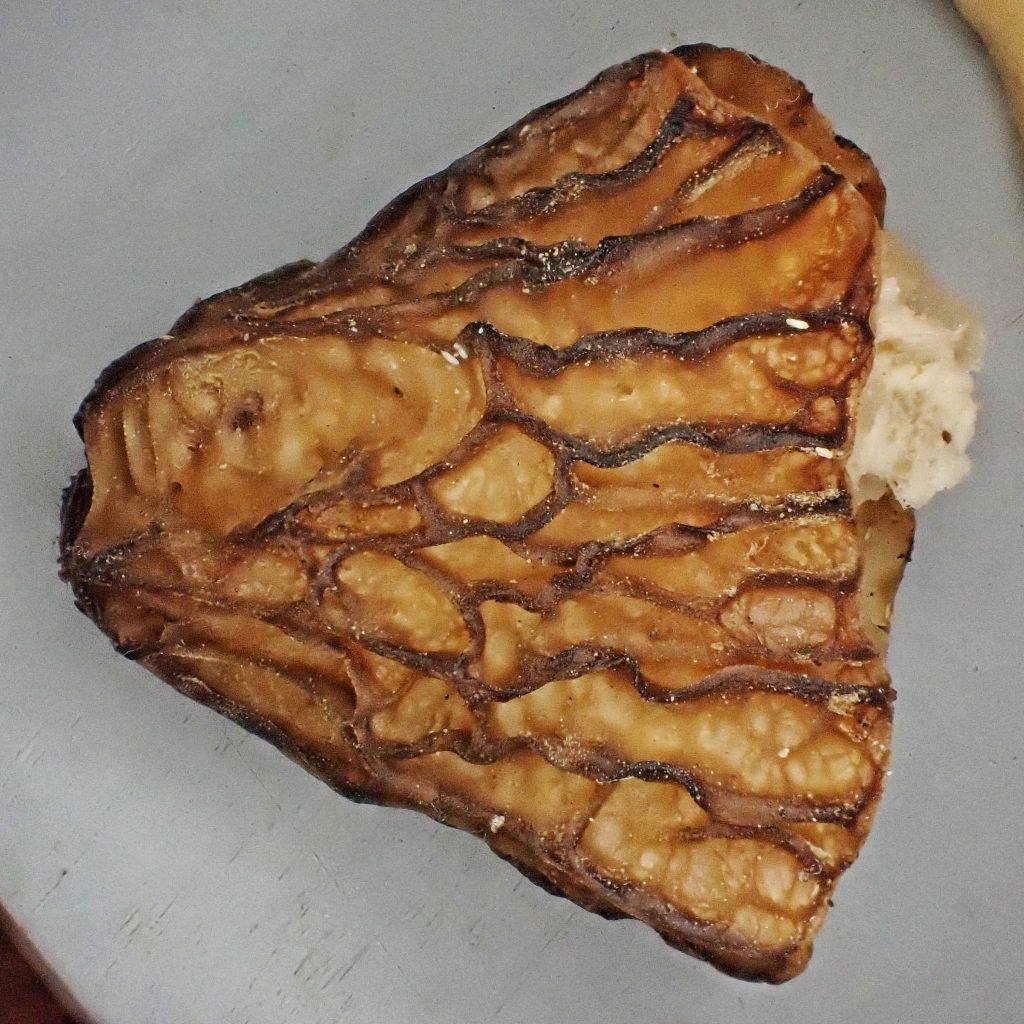
Ethnobotany– I can’t find anything about native peoples usage of these fungi.
Description– “Verpas are similar in appearance to morels but the cap is attached only at the apex of the stipe so that the sides of the cap hang freely like a lampshade. Verpa bohemica is characterized by its brown, bell-shaped, strongly wrinkled, cap and whitish stipe.” Verpa bohemica – Burke Herbarium Image Collection
“Cap: 2–4 cm high; 1.5–3 cm across; nearly conical, or bell-shaped, or somewhat irregular; wrinkled longitudinally, sometimes appearing pitted and ridged (and then with ridges darker than pits); dry or moist; finely fuzzy or bald; tan to brown or dark yellow brown; undersurface whitish.
Stem: 8–22 cm long; 1.5–3 cm thick; more or less equal, or sometimes tapered upwards or downwards; creamy white to dull yellow; sometimes discoloring orangish when handled; often featuring fine scurf that forms concentric belts.
Flesh: Thin; the cap and stem are hollow, or loosely stuffed with whitish, wispy fibers (like cotton candy) in the stem.” Verpa bohemica (MushroomExpert.Com)

Similar species– “It bears a resemblance to the half-free morels, Morchella populiphila and Morchella punctipes, but the half-free morels are exactly that—half-free—while Verpa bohemicahas a cap that hangs completely free of the stem, attached only at the top. Another way to separate the two mushrooms is to cut them open; the half-free morels are hollow, while Verpa bohemica usually has cotton-candy-like wisps of flesh inside. On close inspection, the verpa has a cap that is (usually) different, as well; it tends to look wrinkled, rather than pitted (though old specimens can develop a decidedly “pitted” look).” Verpa bohemica (MushroomExpert.Com)
“If the attachment of the cap is noted, the only morel that it could be confused with is Morchella semilibera, in which the cap is free from the stipe for about half of its height. However, the distinctly ridged and pitted morel cap is very different from the wrinkled cap of V. bohemica.” Verpa bohemica – Burke Herbarium Image Collection
“Verpa bohemica has a distinctly wrinkled or pitted cap, while Verpa conica will have a much smoother, rounded cap (although it may become *slightly* wrinkled with age or dry weather). Verpa conica will also generally be a bit smaller than V. bohemica in stature.” Early Morels: How to Find and Identify Verpa Mushrooms! – Mushroom Marauder
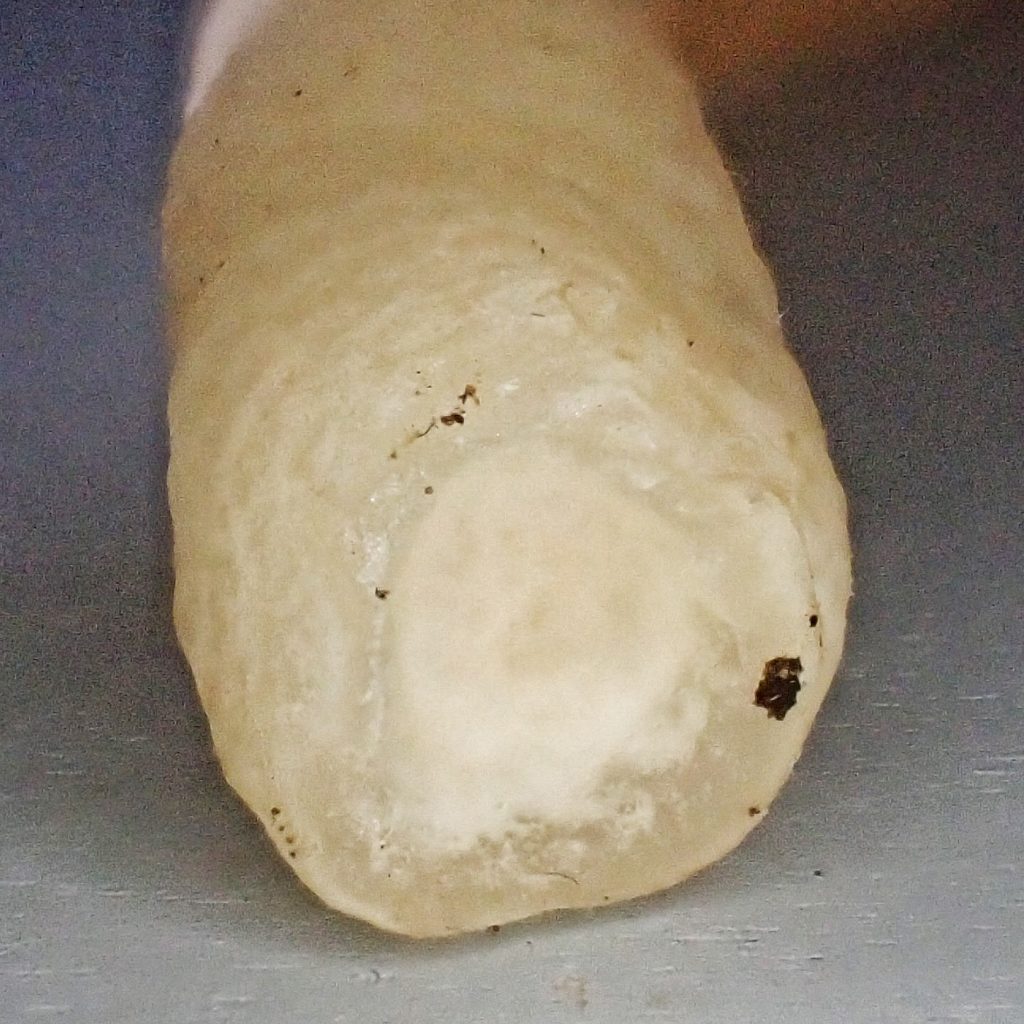
Habitat– “Probably mycorrhizal; found under hardwoods (and sometimes under conifers) in early spring”. Verpa bohemica (MushroomExpert.Com)
“It can be found in a number of wooded habitats, but especially along rivers and streams under cottonwoods.” Verpa bohemica – Burke Herbarium Image Collection
“The fruit bodies of V. bohemica grow singly or scattered on the ground in woods in early spring, often before the appearance of the morel, and throughout the morel season.[5] It is often found along riverbanks, near cottonwoods, willows and aspens, often buried in plant litter.[14] The fungus prefers to fruit in moist areas with ample sunlight.[31] Its minimum growth temperature is 3 °C (37 °F), with an optimum of 22 °C (72 °F), and a maximum of about 30 °C (86 °F).[32] A study of carbon and nitrogen isotope ratios indicated that Verpa bohemica is saprobic, that is, obtaining nutrients from decomposing organic matter.[33] It has been suggested, however, that the fungus is mycorrhizal for at least part of its life cycle.” https://en.wikipedia.org/wiki/Verpa_bohemica
Range– “The fungus has a wide distribution throughout northern North America;[5] its range extends south to the Great Lakes in the Midwestern United States, and south to northern Californiaon the West Coast.[20] In Europe, the fungus is widely distributed, and has been collected from Austria,[35] the Czech Republic,[36] Denmark,[35] Finland,[37] Germany,[38] Norway,[39] Poland,[40] Russia, [41] Romania, Slovenia,[35] Spain,[35] Sweden,[42] and Ukraine.[43] In Asia, it has been recorded from India[44] and Turkey.[45]” https://en.wikipedia.org/wiki/Verpa_bohemica
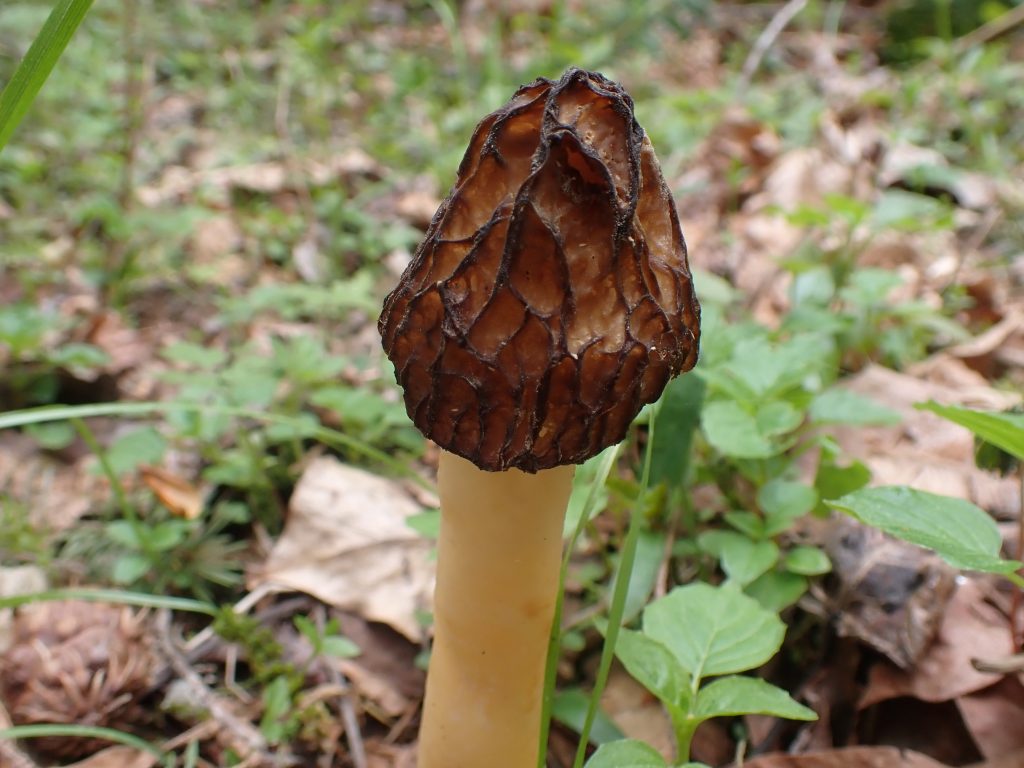
Reproductive timing– “Verpa bohemica, mistakenly called the “early morel” in some areas, appears very early in the spring, and continues fruiting during the true morel season.” Verpa bohemica (MushroomExpert.Com)
Etymology of names– “Verpa comes from the Latin for erection or little rod (also a vulgarity for phallus).” https://en.wikipedia.org/wiki/Verpa. “The specific epithet bohemica refers to Bohemia(now a part of the Czech Republic),[12] where Julius Vincenz von Krombholz originally collected the species.” https://en.wikipedia.org/wiki/Verpa_bohemica
Eaten by– Like many fungi, Verpa bohemica is probably consumed by a variety of slugs, snails, springtails, the larvae of fungus gnats, and mammalian herbivores, but I can find nothing specific for this species.
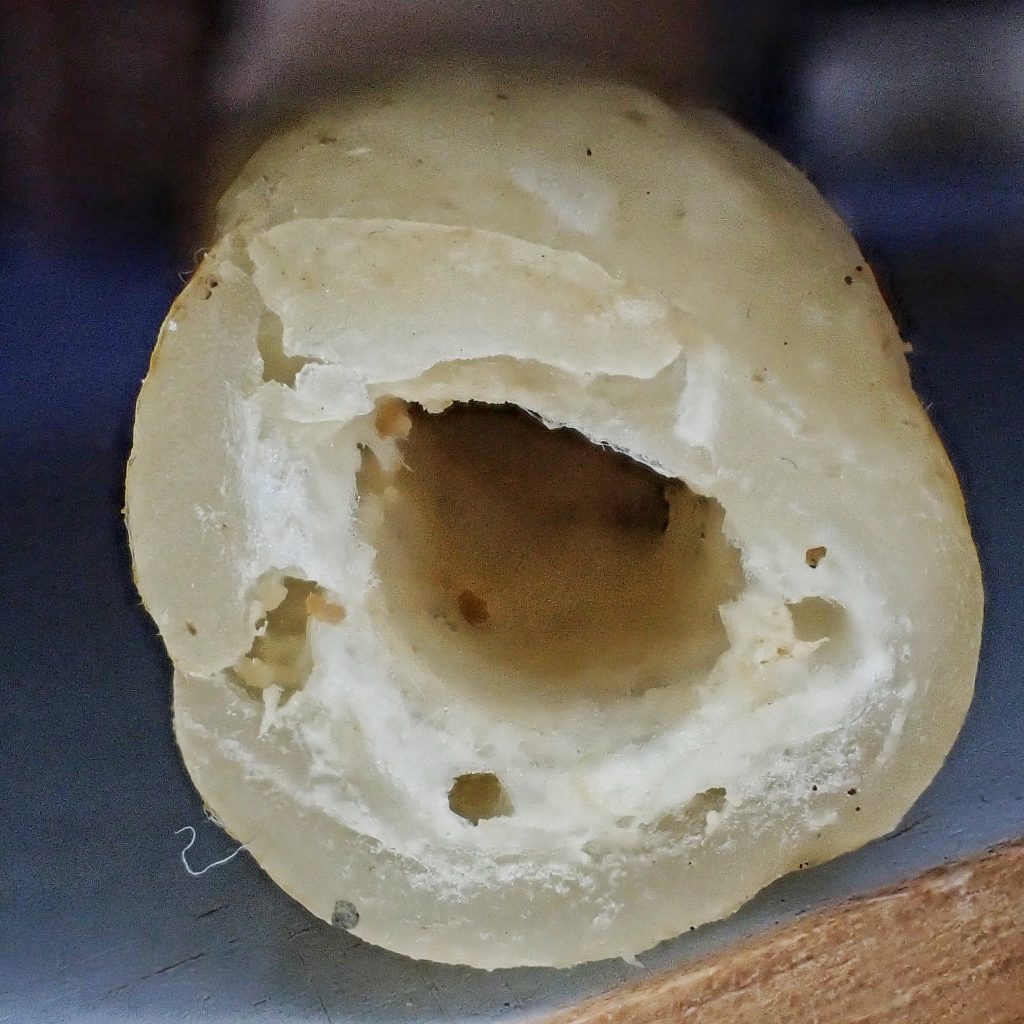
Verpa bohemica (MushroomExpert.Com)
Mad about Mushrooms . . .: Verpas 101
Early Morels: How to Find and Identify Verpa Mushrooms! – Mushroom Marauder
https://en.wikipedia.org/wiki/Verpa_bohemica
https://www.fungimag.com/spring-2015-articles/Early%20Morels%20LR.pdf
Verpa bohemica: The Ultimate Mushroom Guide
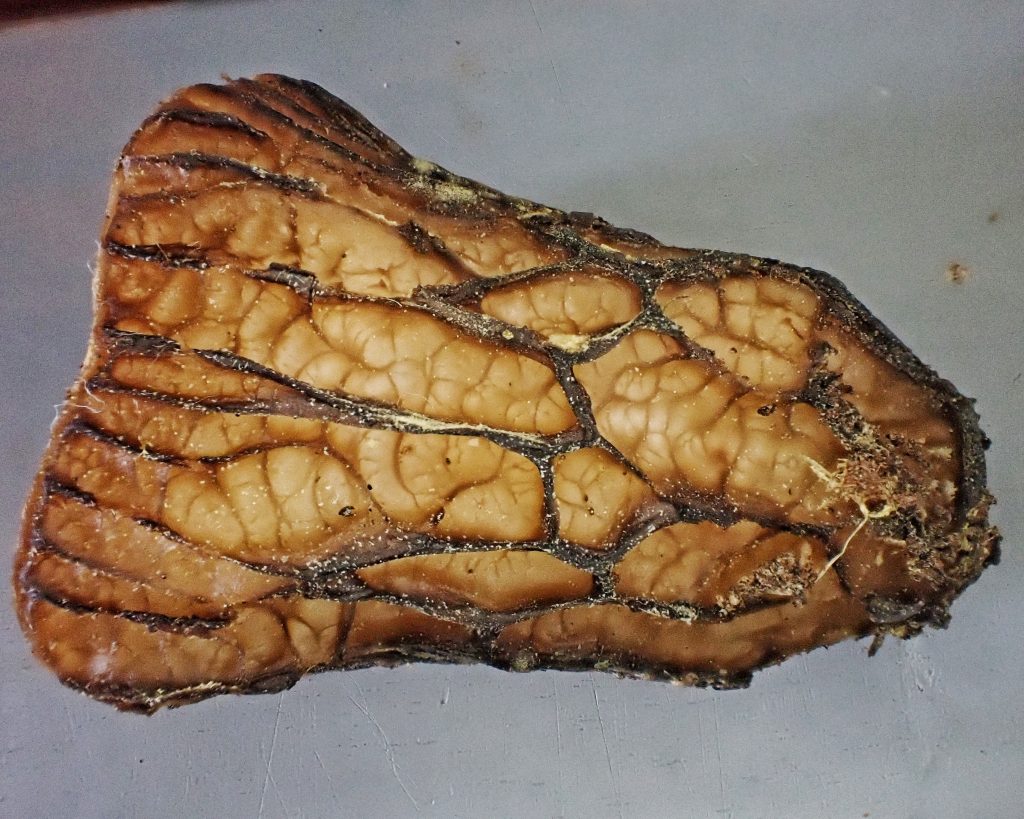
It’s marvellous to see one of my favourite kingdoms (Fungi) featured in one of my favourite blogs. Thanks!
For future fungal posts, remember: fungus, singular; fungi, plural. So, e.g., “This very cool looking fungi” should be “This very cool looking fungus”.
Thanks for your appreciation and kind words, Andy! I know better too, about the singular/plural, but I must have been sloppy in my editing. I’ll fix that!
Thanks for the warnings.
Great stuff, as usual, Dan.
Thank you, Brooke.
Thanks for your appreciation, Brooke!
It’s always a good thing to have ‘young’ eyes along! 💞
Yes it is! Though some young eyes are more useful than others😀